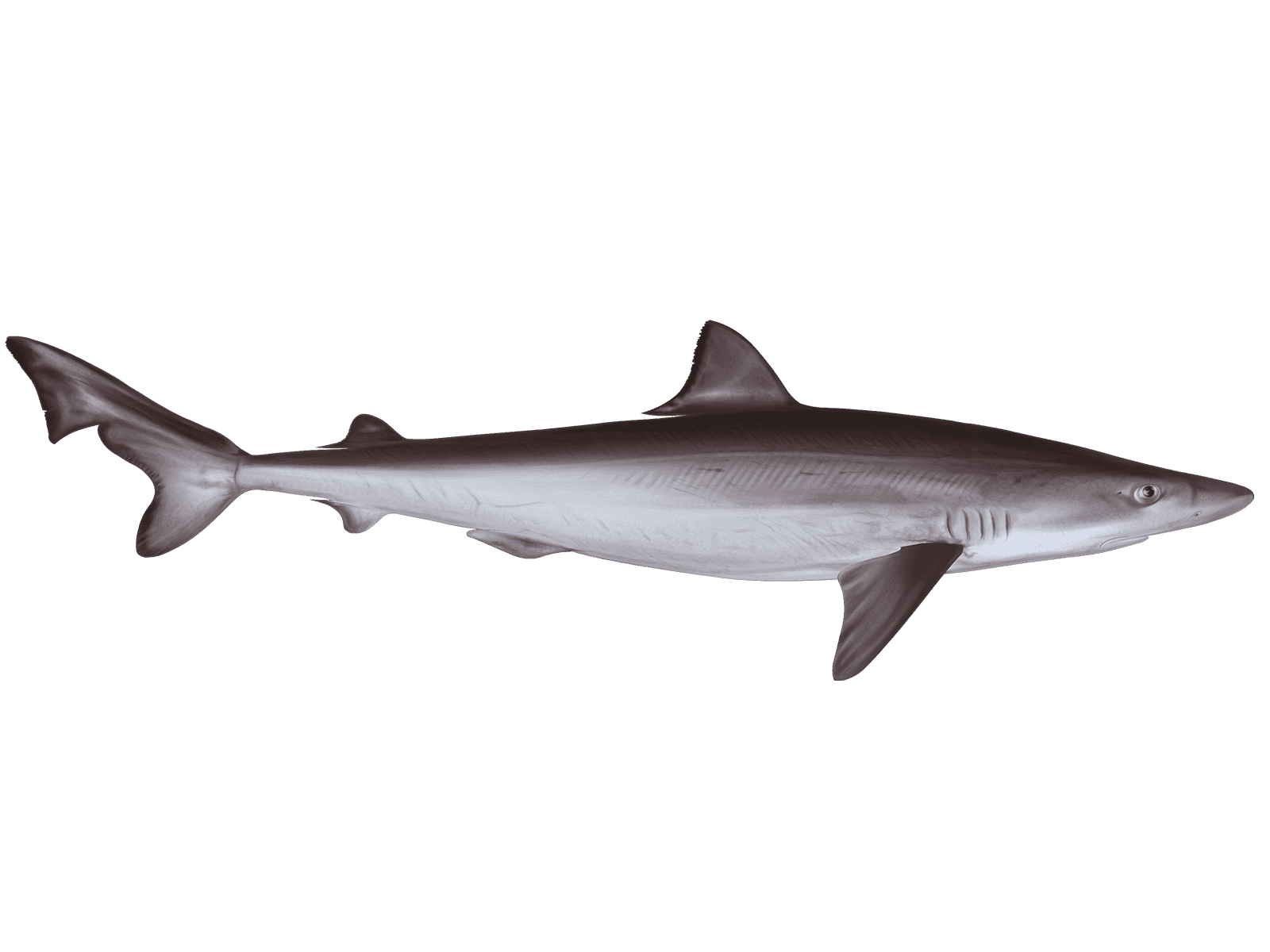Tope Shark

Species Details
Galeorhinus Galeus
Triakidae
Carcharhiniformes
Warm Coastal Waters
60 - 98 lbs.
50" - 77"
Tope Shark (Galeorhinus galeus) Fish Description
The Tope Shark (Galeorhinus galeus) is a type of houndshark found in most temperate waters around the globe. This elegant looking fish is medium-sized and can easily be identified through its distinctive notched tail. Its long and slender body and pointed snout give it a rather torpedo-like shape. Its first dorsal fin is situated right in the middle of its body and is somewhat triangular in shape. The second dorsal fin is about half the size of its first one and almost the same size as its anal fin. Its color varies from dusky brownish to dark bluish-gray on top while the lower part is white.
Like all sharks, the Tope Shark is carnivorous and will eat pretty much anything it can find in the ocean. Though it commonly preys on a variety of small fishes, including herring, sardines, anchovies, salmons, tunas, mackerels, wrasses, cods, midshipmen, flyingfishes, and even barracudas, it may also prey on different marine invertebrates, including squid, octopus, crabs, marine snails, and sea urchins.
The Tope Shark is an ovoviviparous fish, which means its fertilized eggs are developed and hatched inside the mother and will give birth to live pups. Mating occurs in the deeper parts of the ocean, usually during spring. Gestation periods would commonly last in about a year. When the time comes to give birth, the females would move into their known nursery areas in the shallow parts of estuaries and bays and move on and leave their young ones to fend on their own. The pups would remain in their nursery areas until they’re big and strong enough to swim to the open ocean, in which they can live up to more than fifty years.
Interesting Facts About the Tope Shark
- Tope Sharks can reach more than six feet long and weigh almost one hundred pounds at a maximum.
- Females can grow much bigger than males.
- The biggest Tope Shark ever caught on record measures more than five feet long and weighs about seventy-two pounds.
- The world record was caught off the coast of New Zealand in 1986.
- A ten-year-old girl named Isabella Tolen holds Washington State’s record with a catch that measures five and a half feet in length and forty-one pounds in weight.
- The girl caught the forty-one pounder off Grays Harbor, Washington in 2018
- Because of its rather small size and preference for smaller prey, the Tope Shark is mostly considered to be harmless to humans.
- The only injuries attributed to this otherwise gentle shark are either provoked or when an inexperienced angler mishandled the fish.
- Tope Sharks can adapt well in captivity and are popular attractions in public aquariums.
- Though this shark species is not endangered, its populations have seen significant declines over the past several decades.
- The Tope Shark is a favorite target for both recreational and commercial fishers.
- They are commercially harvested in different parts of the world for their meat, fins, and liver.
Size and Swimming Speed
Tope Sharks don’t grow that big as compared to other larger shark species but it can still grow as much as six feet in length. Their average sizes, however, are recorded just between four to five feet. Tope Sharks are known to be fast and strong swimmers, especially when they’re on attack mode, clocking at twelve miles per hour at full speed. They are also known to be highly migratory and can travel vast distances in a single day.
Habitat and Distribution
As earlier mentioned, they can be found pretty much in all temperate and subtropical waters in the world with known abundance in the eastern Atlantic as well as in the Mediterranean Sea, in the waters off the coasts of South Africa, and around Australia and New Zealand. In the Americas, they can mostly be found in the waters of the south-western Pacific Ocean—from as far north as British Columbia, Canada, to the waters of Peru and Chile. In the US, they are most abundant in California.
Tope Sharks aren’t that picky when it comes to their habitats. They often move to different parts of the ocean—from the open waters of the ocean to the surf zone and even in shallow bays.
Fishing Tips
Tope Sharks are usually caught offshore and are known to be quite a fighter. Although a light gear can be sufficient, you can opt for a heavier trolling tackle for you to be able to handle this feisty fish with relative ease. Like most sharks, you can attract this shark by way of chumming—just make sure to make your chum bloody. For bait, you can use oily fishes such as herring, pilchards, sardines, or mackerel.







